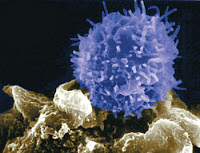 Identifying the “permeability factor” for patients with FSGS or minimal change disease has been one of the “holy grails” of nephrology, and our inability to identify such a factor has not been for any lack of trying. One of the obstacles in studying this disease is the lack of good animal models to study it.
Identifying the “permeability factor” for patients with FSGS or minimal change disease has been one of the “holy grails” of nephrology, and our inability to identify such a factor has not been for any lack of trying. One of the obstacles in studying this disease is the lack of good animal models to study it.
A French group published a 2007 JASN article describing a mouse model of immune-mediated nephrotic syndrome which perhaps gives us some mechanistic insight into the cause of the disease. In this paper, researchers took CD34+ T-cells from humans with steroid-resistant nephrotic syndrome. They then injected these T-cells either (a) intraperitoneally, or (b) intraosseously–that is, directly into the bone marrow. In the case of intraperitoneal injections, the existence of circulating “humanized” T-cells could be demonstrated, but they eventually went away over time as the engraftment was not permanent. These mice did not get proteinuria. In the case of intraosseous injections, these T-cells could be demonstrated to engraft permanently, albeit at a low frequency. Interestingly, these mice developed significant albuminuria and foot process effacement, suggesting that this could be used as a mouse model of disease.
What is particularly interesting about this experiment is the idea that the “permeability factor” is transferable only with T-cell precursors–and not with peripheral T-cells. So perhaps the permeability factor comes from the bone marrow, rather than activated T-cell responses…

